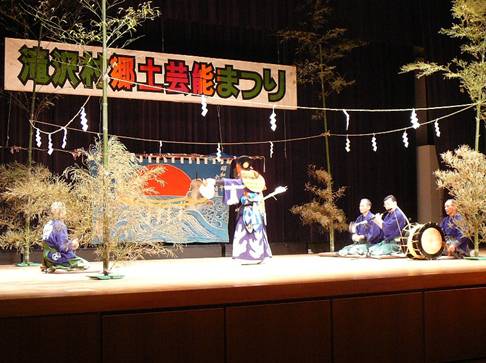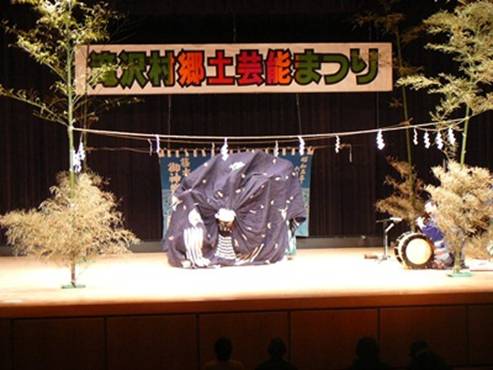
| Pseudonym reading | |
|---|---|
| Specified type | Prefecture designation |
| Type | Intangible folk cultural property |
| Designated date | May 10, 2011 |
| Specified details | |
| quantity | |
| location | Takizawa-shi Tochigi district |
| owner | |
| Holding group | Yuuki Kagura Preservation Association |
| Management organization | |
| home page |
Overview
Tochigi Kagura is the dedication kagura of the Tamura Shrine that enshrines Sakauedamura Maro, and it was originally the Kagura played by generations of the priests Saito family. As it is shown that Saifukuin, who was once a student of Saito family and Tamayama village, fought for many years, Tochigi Kagura has drawn a line with Yamabushi Kagura, and it has been transmitted by the company house (Miyaburi) It is classified as Kagura.
There are about 30 programs in total, including the Iwato Kaito in the sky, the bird dance, the Hachiman dance, and the Yamanoshin dance. Above all, Yamanoshin dance dances with the coin, bell and fan at first. Faced with a guardian, the dancers transform into Yamanokami. A feature found in Yamanojin Mai in Tochigi Kagura is to connect 12 types of marks. The mountain dance that dances with so many signs is unique. In addition, it is rare for us to lie down in front of the body and connect each mark.
The status of the preservation meeting is 27 members in total: 12 members and 15 children. He teaches the program to members twice a month at Kagura-den in Tamura Shrine. In addition, for several decades, we have created and organized an organization for children Kagura as part of extracurricular classes for the school districts of Tochigi Elementary School. It aims to "develop the sound development of the youth and the uplifting of the spirit through the children's kagura, deepen the mutual exchange and strive to pass on the tradition of Tochigi kagura".
It is believed that Tochigi Kagura is originally performed by Iwate Mountain's master course, but it has been protected by Morioka as a so-called company-style kagura. Shafu-Jugura is a Kagura organized by the Morioka lords, and has been classified as one of the Kagura in Iwate Prefecture. Tochigi kagura is a typical example, and it can be recognized as an entertainment historical value as an indicator of the occurrence or establishment of company style kagura. The scrolls left in the Saito family prove that the Saito family transferred Kagura, and they are extremely valuable as historical materials that show the realities of the company style kagura.
Moreover, in the sense that Kutsuki Kagura embodies the relationship between politics, religion, and performing arts during the republic, it is also valuable as an indicator of the process of the change of Yamabushi Kagura, and as an indicator of regional characteristics. Yamanojin and lion dance leave many rare elements and are extremely valuable. Lion dance is characterized by the way Kojishi is taken into the dumplings and the place where it exhales what the lion drinks, and the old form of Gongen dance in Yamabushi Kagura shows.
As described above, Tochigi Kagura retains the elements of Yamabushi Kagura in spite of its corporate style, and is extremely valuable in considering the form of Yamabushi Kagura in northeastern Japan.
image

